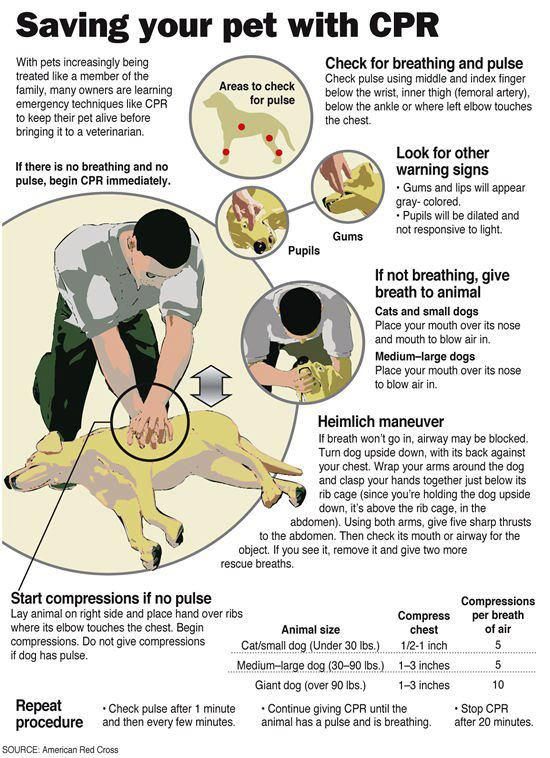|
|
Post by Nellie on Feb 2, 2012 7:26:59 GMT -5
A very good video on how to do CPR on your dog:
wimp.com/dogcpr/
Something I think we all should know.
|
|
|
|
Post by von Cosack on Feb 2, 2012 10:17:21 GMT -5
Very nice and a very important process to learn. It should be posted in the Von's Educational area however!
........do you know where Pudgies nose and mouth hang out? ? ?
He has NO luck for mouth to nose or mouth if he needs it, I ain't goin there!
Personally I think that Dalmation has been dead for hours, didn't save that one!!
Von.
|
|
|
|
Post by HEXE- TINA on Feb 2, 2012 10:37:03 GMT -5
LOL VON
|
|
|
|
Post by von Cosack on Feb 2, 2012 11:22:06 GMT -5
Hi Sweetie!!!  Hexe!!! Von |
|
|
|
Post by aruiz0322 on Feb 2, 2012 11:39:05 GMT -5
Thank you Nellie for that video...good refresher course for me from working at the clinic. This is always good to know and I think if you have animals and kids you should know CPR for both.
Thanks again
Amy
|
|
|
|
Post by breesmom on Feb 3, 2012 8:27:21 GMT -5
Great Video Nellie, THANK YOU!!! I watched it a couple of times...but it would be great if it was a sticky in the health section  |
|
|
|
Post by trinitydobes on Feb 21, 2012 15:11:08 GMT -5
I also found this posted on FB today
~~~~~~~~~~~~~~~~~~~~~~~~~~~~~~~~~~~~~~~`````
How to Give Canine CPR
CPR (cardiopulmonary resuscitation) is the process of breathing life back into an unconscious human. A similar technique can also work effectively on dogs.
The signs that indicate the need for CPR include unconsciousness, lack of arousal, lack of physical movement, or eye blinking. These symptoms can occur from drowning, choking, electrical shock, or a number of other situations.
The key to canine CPR is remembering the ABCs:
Airway,
Breathing, and
Cardiac compression.
To perform the three techniques, follow these steps.
Lay the dog on a flat surface on its right side and extend the head back to create an airway.
Open the jaws to check for obstructions, and if any exist and are not easily removed, do one of two things, depending on the size of the dog.
For small dogs, hold them upside down by their back end and shake vigorously to try removing the obstruction.
For large dogs, lay them on their side and, if necessary, use long-nosed pliers to remove the obstruction.
Cup your hands around the muzzle of the dog's mouth so that only the nostrils are clear. Blow air into the nostrils with five or six quick breaths, again, depending on the size of the dog.
Small dogs and puppies and require short and shallow breaths.
Larger dogs need longer and deeper breaths.
Continue the quick breaths at a rate of one breath every three seconds or 20 breaths per minute.
Check for a heartbeat by using your finger on the inside of the thigh, just above the knee. If you don't feel a pulse, put your hand over the dog's chest cavity where the elbow touches the middle of the chest.If you still don't find a pulse, have one person continue breathing into the nostrils (mouth to snout), while another gives cardiac massage.
Give the dog a cardiac massage by placing both hands palms down between the third and sixth rib on the chest cavity.
For large dogs, place your hands on top of each other.
For small dogs or puppies, place one hand or thumb on the chest.
Use the heel of your hand(s) to push down for 10 quick compressions and then check to see if consciousness has been restored. If consciousness has not been restored, continue the compressions in cycles of about 10 every six seconds for 10 cycles a minute.
After each cycle of compression, the other person should give the dog two breaths of air in the nostrils. If only one person is present, this procedure can still be done successfully.
Once the dog has started breathing, contact a veterinarian immediately.

|
|